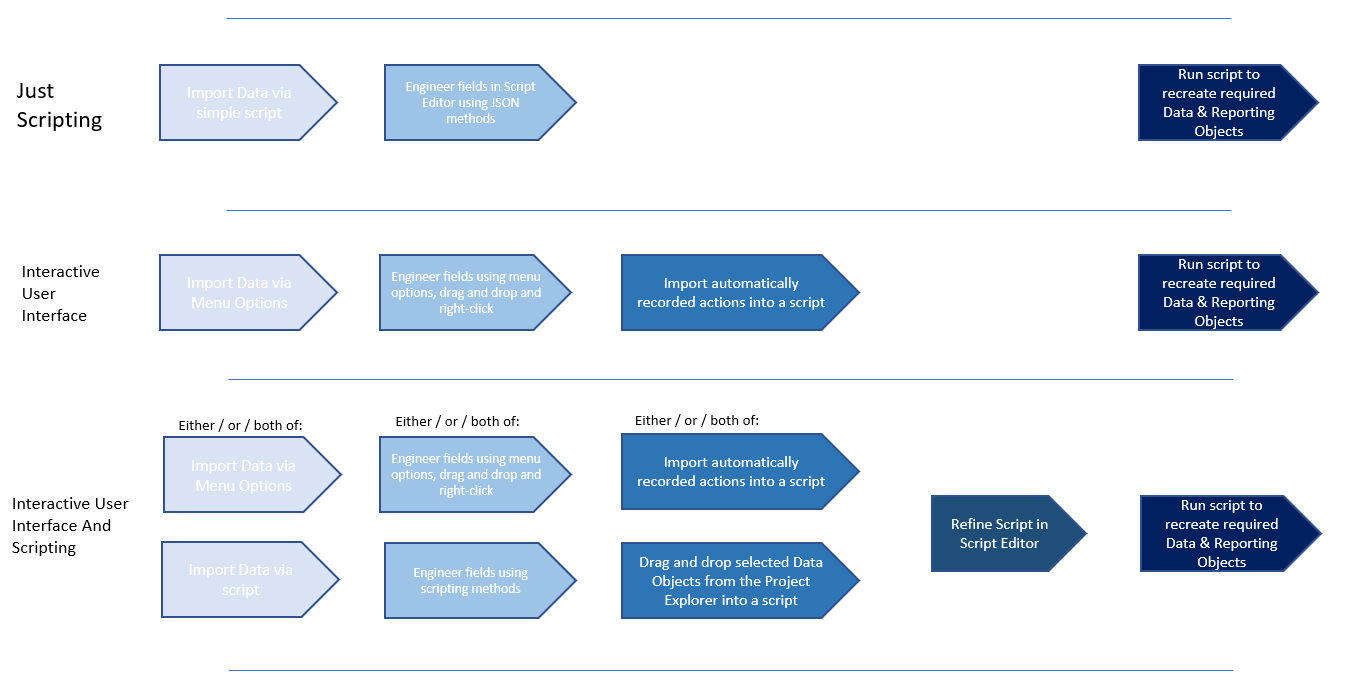There are multiple approaches for engineering - or transforming - data in DataJet. These can be broadly grouped as:
- Scripting
- Using DataJet Dektop
However, it should be noted that the two groups are not exclusive of each other - engineering that is done via the User Interface is automatically recorded in the project history, and User Interface data objects - such as (transformed) tables and fields - can be added to scripts via drag and drop.
With that in mind, the following workflows are all possible depending on the project approach and purpose:

These workflows can be grouped into 5 stages:
- Importing Data
- Inspecting, Analysing and Engineering Fields
- Turning insight into repeatable actions
- Testing and Refining repeatable engineering actions
- Automated engineering
The most common workflow is a mix of Interactive UI and Scripting.
Importing Data
For details on how to get started with Importing Data, see Creating a Project and Uploading Data or for more information see Introduction to Loading Data.
Inspecting, Analysing and Engineering Fields
Inspecting and Analysing Fields
Before engineering a field, it is often necessary to inspect it. DataJet offers many different routes to inspection, including:
Engineering Fields
The following broad functional groups are available for engineering fields via the User Interface Menu options:
Often it is necessary to design and create a Data Model/Schema. The following functional areas support this activity:
- Joins
- Key Tables
- Time Series Tables
- Data Model Scripting Methods
Turning Insight into repeatable actions
Testing and refining repeatable actions
- Controlling Scripts
- Techniques for efficient script development
Automated Engineering
- Scheduling Load and Engineering
- Triggers
- Notifications
- Data Audits